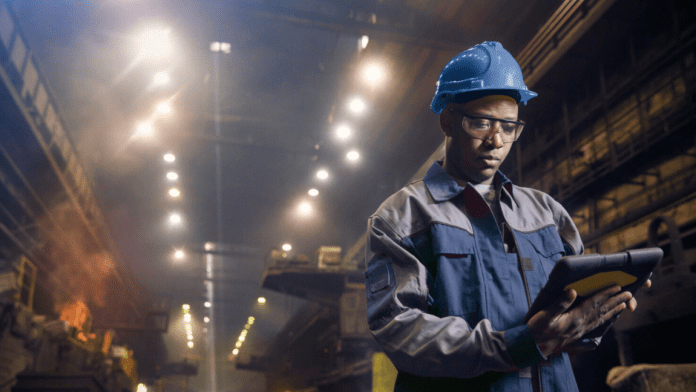5G technology offers manufacturers the chance to build smart factories and truly take advantage of technologies such as automation, artificial intelligence, augmented reality for troubleshooting, and the Internet of Things (IoT). 5G technologies provide the network characteristics that are essential for manufacturing. Low latency and high reliability are needed to support critical applications in the manufacturing field. High bandwidth and connection density secure ubiquitous connectivity. 5G technology will allow for higher flexibility, lower cost, and shorter lead times for factory floor production, among other key benefits.
Here we briefly describe three case studies in the 5G manufacturing field.
Audi and Ericsson using 5G manufacturing for industrial automation
Ericsson and Audi have successfully tested the 5G URLLC capabilities with real-life industrial automation applications at the Ericsson’s factory lab in Kista in January, 2020. In the latest demo showcasing the power of 5G URLLC, the two companies have built a robot cell similar to those operating in Audi factories today, but over 5G connectivity.
Thanks to the ultra-low latency and reliability of 5G URLLC, if a factory worker reaches into the cell the robot will instantly stop, making it safe for personnel not to be harmed whilst working with the machines. This instant response with guaranteed reliability is not possible through traditional Wi-Fi or previous-generation mobile networks, meaning that these machines have historically required restrictive wired technology.
Freeing automated machines from wires significantly increases the flexibility, mobility and efficiency of a production line, as robot cells using a wired network connection are restricted in terms of where they can be placed on the factory floor, the companies said. With 5G URLLC, these machines require only a power connection, usually available anywhere in a factory, meaning the production setup can easily be changed and units moved around on a day-to-day basis to maximize efficiency.
Haier partners to bring edge computing and machine vision to 5G manufacturing
Last year, GSMA, China Mobile, Huawei and Haier, a Chinese manufacturer of home appliances and consumer electronics, completed a proof of concept encompassing the deployment of edge computing, 5G and machine vision into Haier’s manufacturing environment.
Stainless steel refrigerators, one of the main products manufactured by Haier, can suffer imperfections through scratching and denting during the course of the production process. Therefore, Haier manually checks every refrigerator that comes from the production line for defects in the stainless steel, which can be a time-consuming task.
The use of edge computing and 5G means that near-real time analysis takes place so refrigerators can be returned to the production line almost instantly.
Huawei and China Mobile implemented a 5G connected MEC architecture inside the Haier factory to enable high-volume image processing with minimal latency to ensure no delays to the production line.
The Haier factory has mounted a 500W industrial camera onto a robotic arm, with high intensity lighting, which is able to scan the refrigerators as they come off the production line. By using a trained algorithm, the local application is able to identify any damage to the refrigerators exterior that requires replacement.
The 5G network is required to transfer the large images produced by the industrial camera whilst maintaining low latency.
Worcester Bosch launched first 5G manufacturing facility in the U.K.
Worcester Bosch, known for manufacturing domestic boilers, had launched the U.K.’s first 5G factory using a 5G private network and mobile edge computing infrastructure provided by Ericsson and managed by BT.
Through a combination of 5G technology, the factory has already been able to optimize machine performance and increase output by as much as 2%.
The factory uses 5G to run real-time machine sensors, allowing them to address problems on the production line before they happen. An additional benefit has been the installation of a network of collision detection sensors, making the factory and its products much safer for on-the-ground employees.
With a private 5G network, factories can roll out AI and machine learning quickly, without needing to disrupt the production line and supply chain through changes to infrastructure, the company said.
Carl Arntzen, CEO of Worcester Bosch, said: “We are using this innovative 5G testbed to pioneer secure Industry 4.0 use cases in the areas of Preventative Maintenance and Robotics to drive productivity. These require large numbers of sensors and high network availability hence our interest in 5G.”
For more 5G manufacturing content, check out the following:

